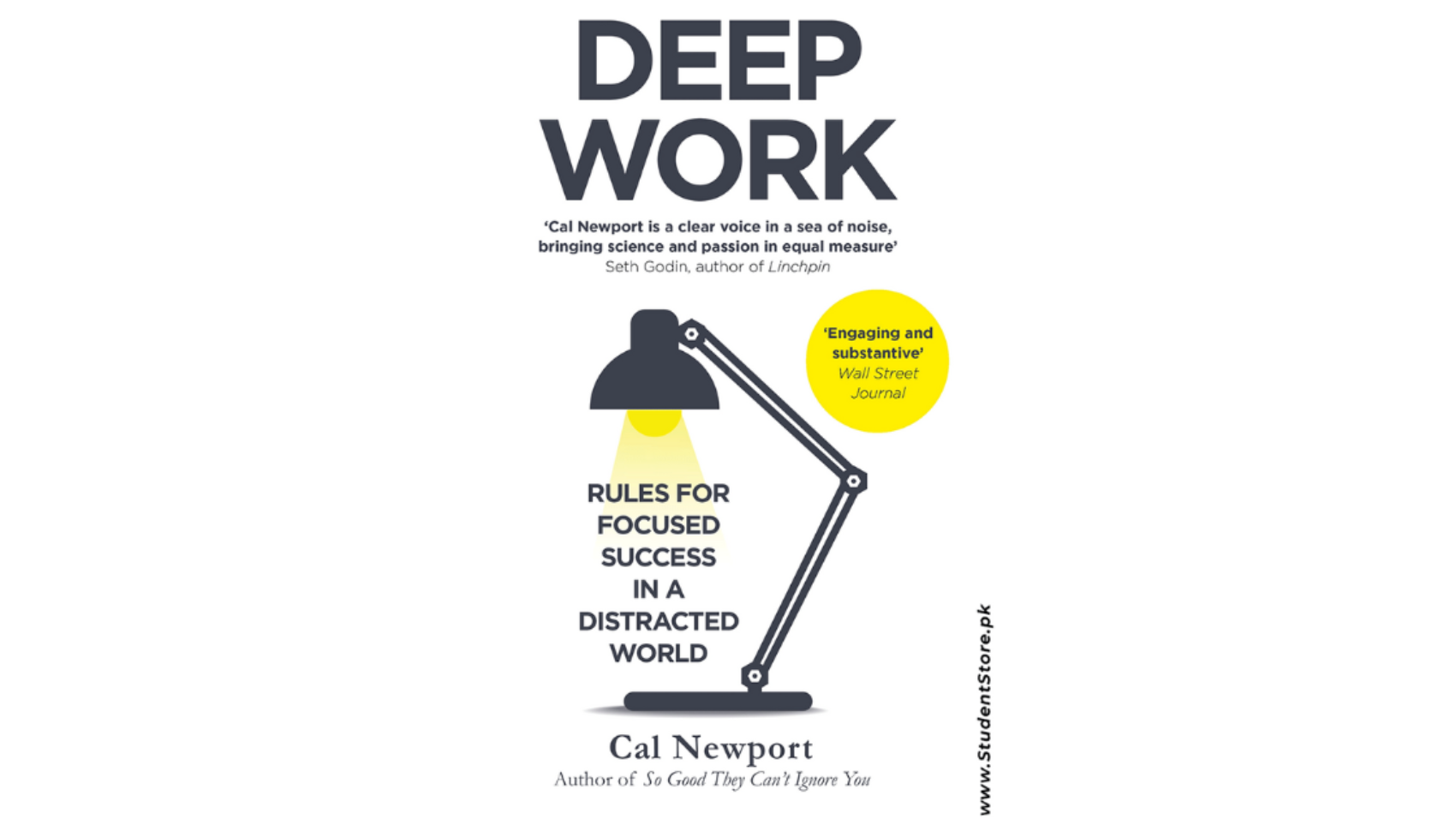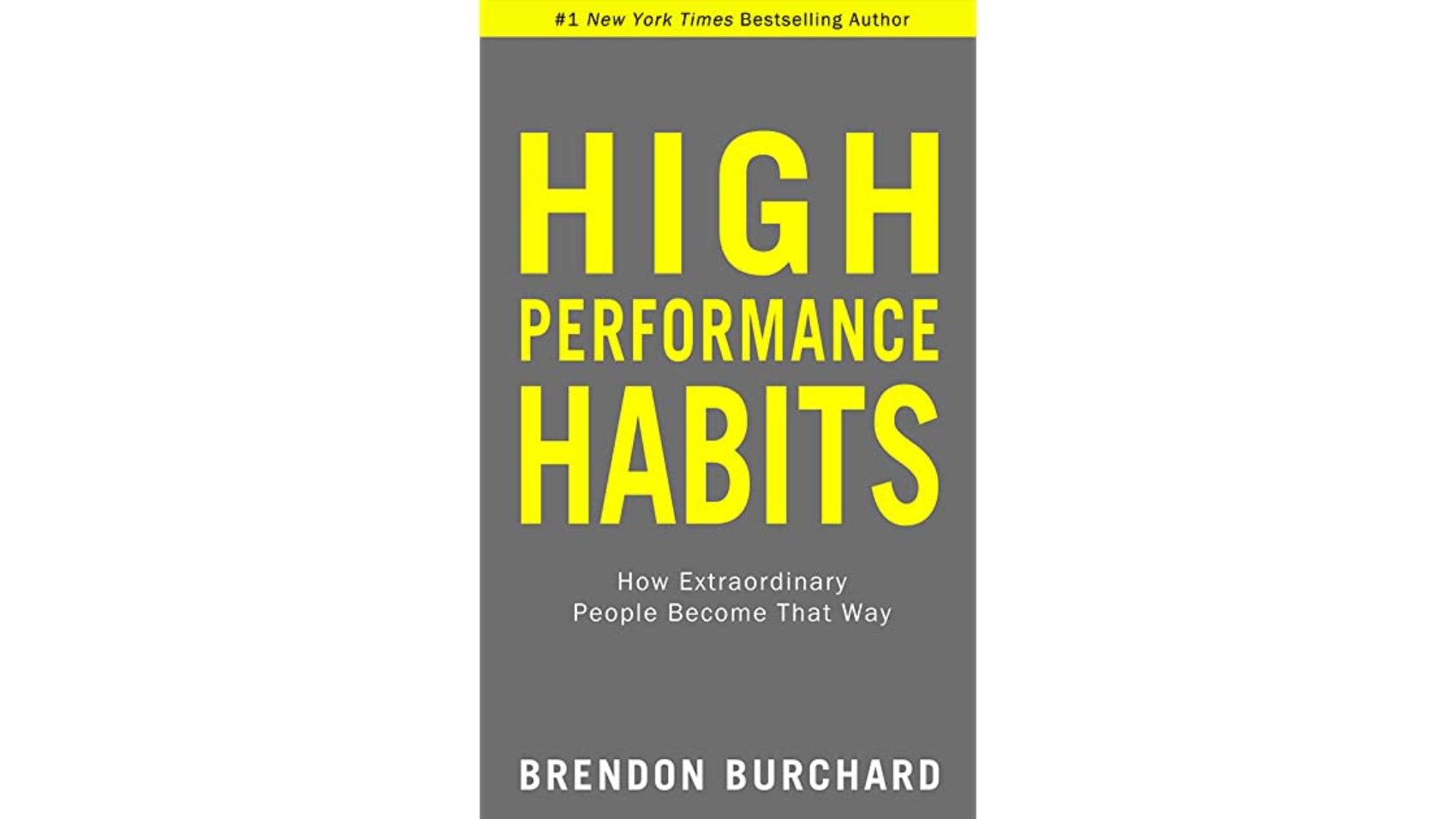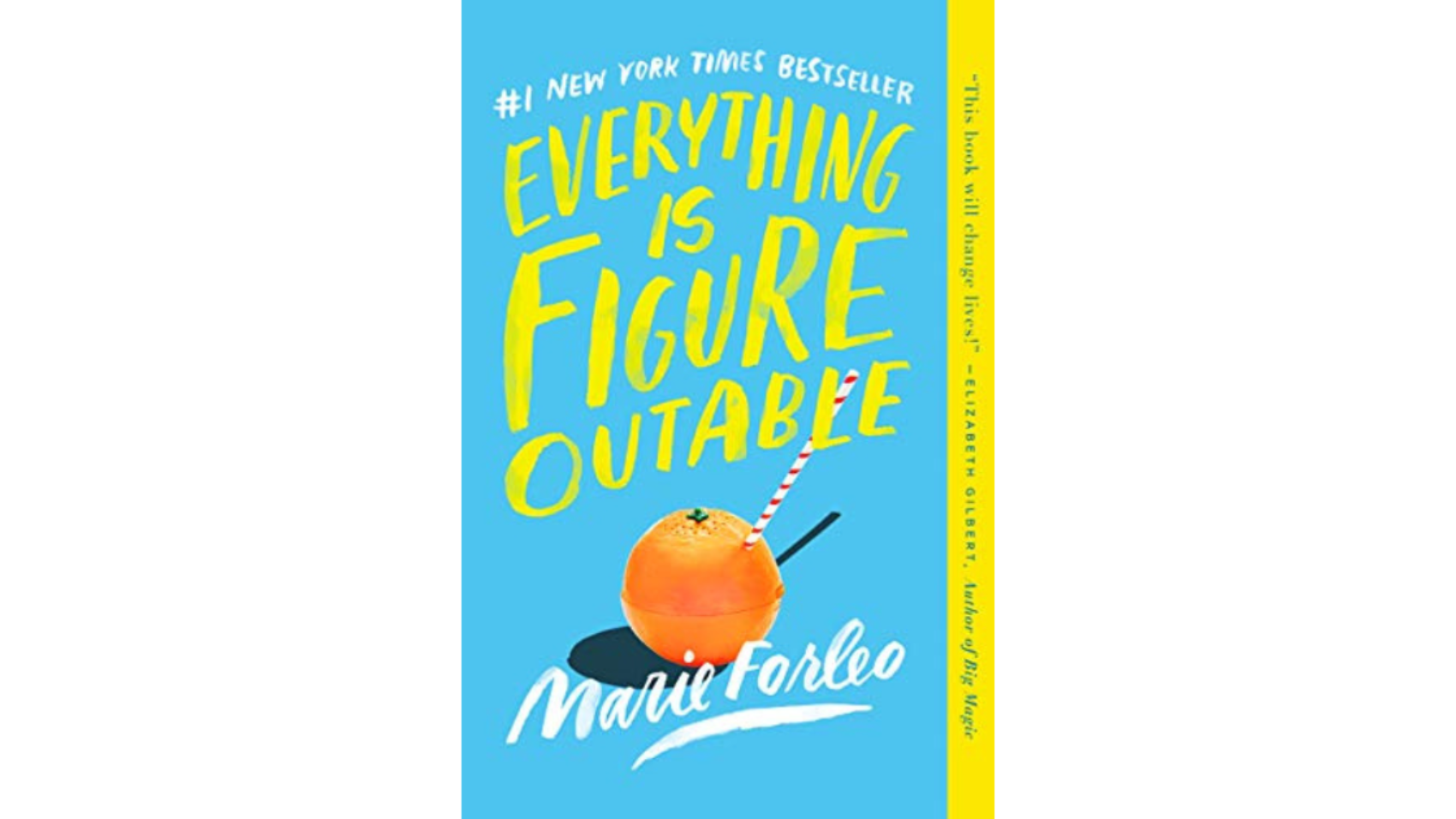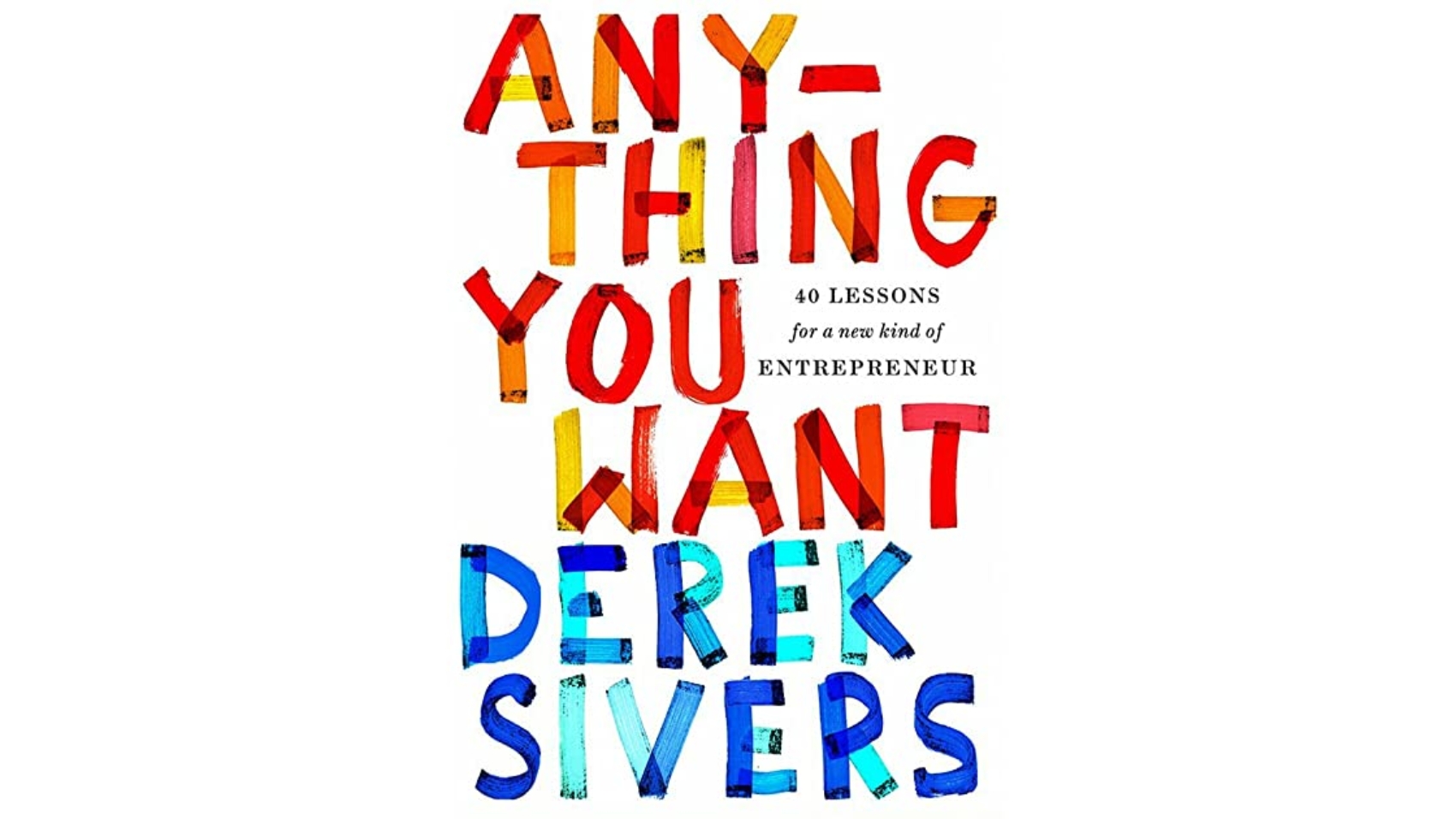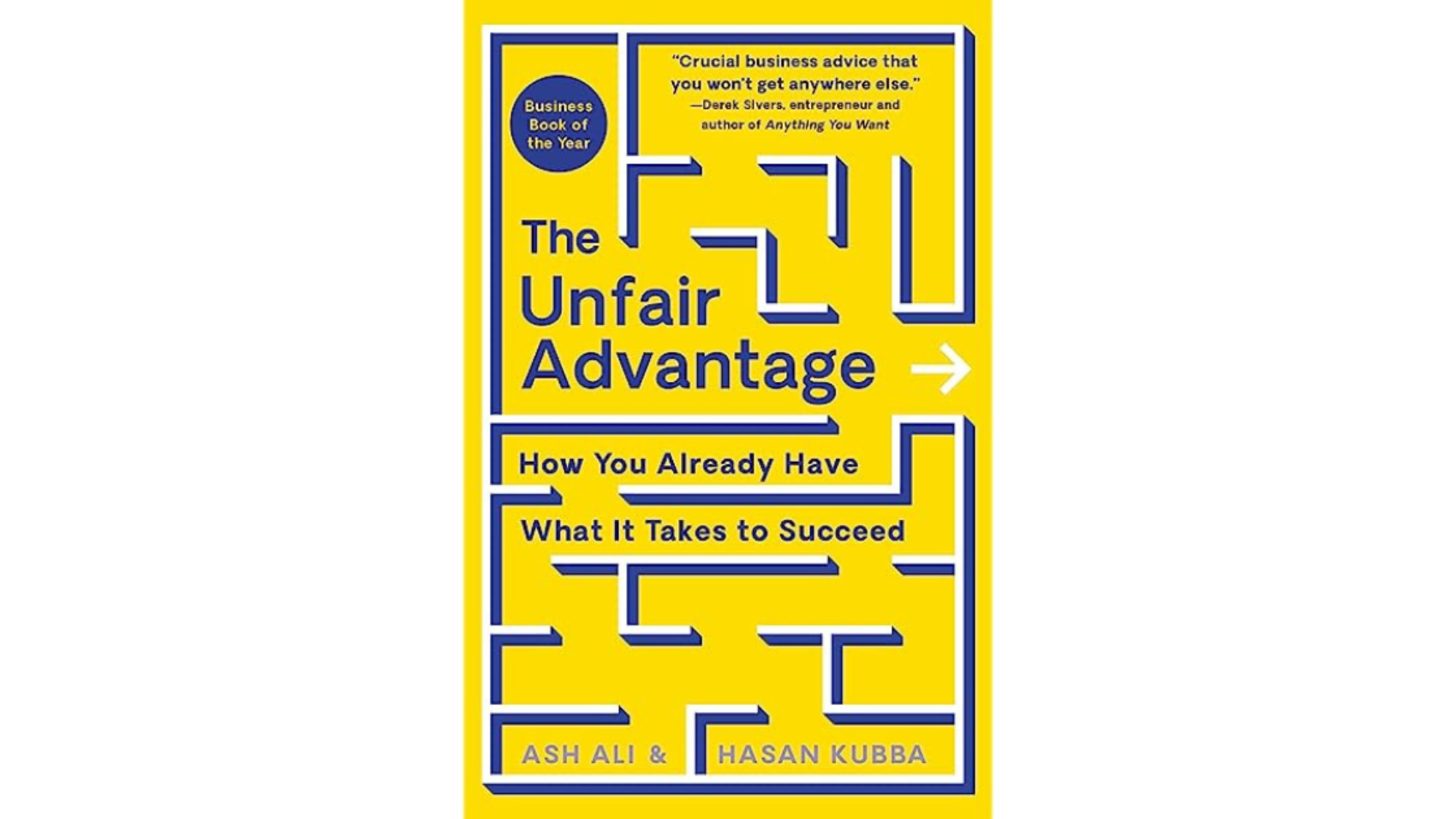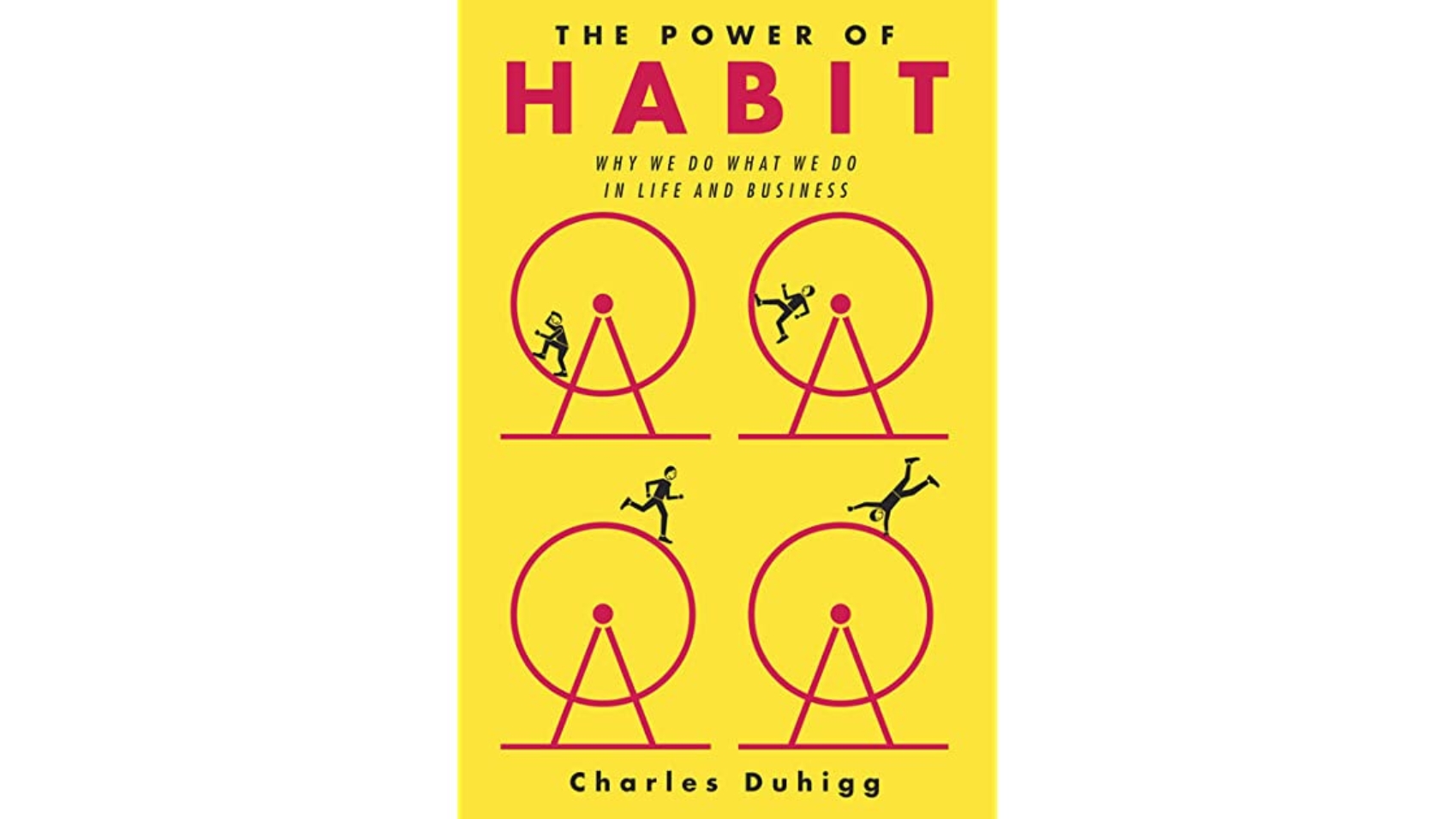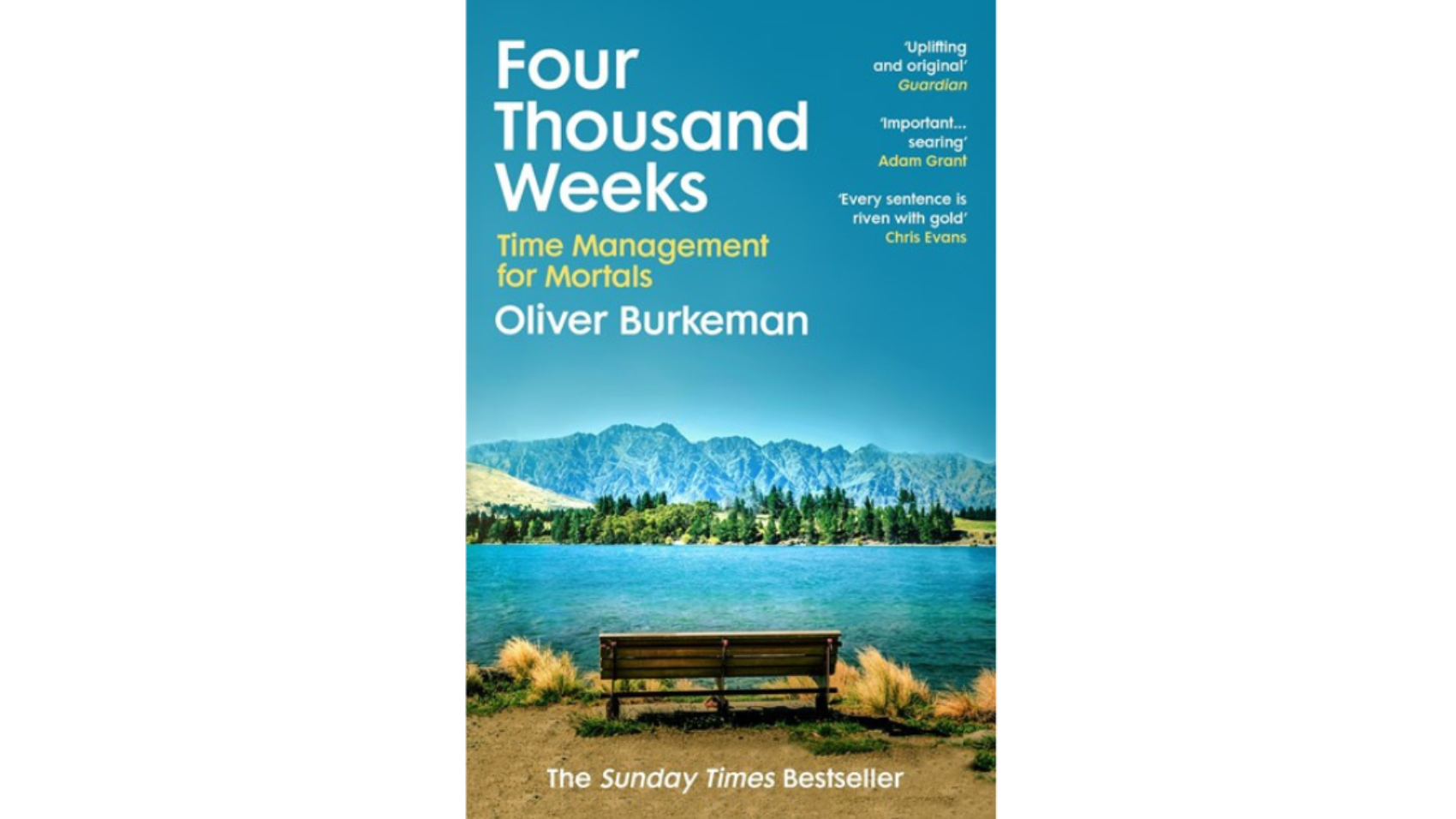It’s Your Time to Rise and Shine by Hal Elrod
Deep Work Deep Work Rules for Focused Success in a Distracted World by Cal Newport
Rules for Focused Success in a Distracted World by Cal Newport
Personal Development / Self Help
High-Performance Habits How Extraordinary People Become That Way by Brendon Burchard
How Extraordinary People Become That Way by Brendon Burchard
Limitless by Jim Kwik
Book Summary
Jim Kwik is the author of the self-help book “Limitless.” The book focuses on educating readers on how to maximize their cognitive talents, including memory, focus, and overall cognition. The author offers doable methods and approaches, such as visualization, mindfulness, and memory exercises, for enhancing brain function. He also stresses the significance of adopting a growth attitude and moving forwards with your goals.
The book gives a summary of the most recent studies on learning and the brain and offers advice on how readers might sharpen their mental faculties. The author also discusses how he overcame a traumatic brain injury in his own life and how he used the methods he outlines in the book to enhance his cognitive abilities.
The book’s overall goal is to equip readers with the tools and techniques to sharpen their cognitive, memory, and focus so they can realize their maximum potential. It also enlightens readers on the most recent findings in brain science and learning and motivates them to take action to realize their objectives.
The Book in 3 Sentences
- The book’s main goal is to show readers how to maximize their cognitive talents, including memory, focus, and overall cognition.
- The author highlights the value of cultivating a growth mindset while offering useful tools and techniques including visualization, mindfulness, and memory skills.
- The book gives a summary of the most recent studies on learning and the brain and offers advice on how readers might sharpen their mental faculties.
Impressions
Inspiring: The book is inspiring and motivating, as it encourages us to unlock our full potential and improve our cognitive abilities.
Practical: Provides practical techniques and strategies for improving memory, focus, and cognitive abilities.
Eye-opening: To understand the latest research on brain science and learning and provides insight into how people can improve their mental performance.
Direct and to the point: Straight-forward and easy to understand, easy to follow, and apply the concepts to our own lives
Relatable: Speaks to the common struggles and difficulties that I have experienced when trying to improve my cognitive abilities and found it relatable and easy to identify with.
Thought-provoking: Encourages us to think about our cognitive abilities and take a deeper look at our limiting beliefs, which can be a thought-provoking and valuable experience.
Personal anecdotes: The author shares his own story of overcoming a traumatic brain injury and how he has used the techniques he shares in the book to improve his cognitive abilities which makes the book more relatable and engaging
Empowering: To take control of our cognitive abilities and improve our mental performance.
How I Discovered It
After watching the movie “Limitless” I thought hanging on to the book might be a good way to explore this concept.
Who Should Read It? (Who Should read this book
Students: The book provides practical techniques and strategies for improving memory, focus, and cognitive abilities, which can be especially useful for students who are trying to excel in their studies.
Professionals: The book provides practical techniques and strategies that can help professionals to improve their memory, focus, and cognitive abilities, which can be beneficial for people in a variety of fields, such as business, finance, law, and medicine.
People with memory or learning difficulties: The book provides insight into the latest research on brain science and learning and provides practical advice on how to improve cognitive abilities, which can be especially useful for people with memory or learning difficulties.
Anyone looking to overcome limiting beliefs: The book helps readers to identify and challenge limiting beliefs that may be holding them back and teaches them how to replace them with empowering thoughts and beliefs.
People who want to become more productive: The book provides practical advice on how to be productive and work effectively to achieve success
How the Book Changed Me
After reading “Limitless,” I developed a greater understanding of how their brain works and how they can improve their cognitive abilities. I also developed a better understanding of how to overcome limiting beliefs that were holding me back and took action toward achieving my goals. Some of the ways people may change include:
Improved memory and focus: Implemented practical techniques and strategies for improving memory, focus, and cognitive abilities, which helped to improve my mental performance.
Improved productivity: The practical strategies helped me in overcoming procrastination and stay focused on the task at hand, which enabled me to become more productive and efficient.
Overcoming limiting beliefs: Identifying and challenging limiting beliefs that were holding them back taught me how to replace them with empowering thoughts and beliefs.
Improved self-discipline: The importance of self-discipline and encouragement to develop a routine and stick to it, helped me to become more disciplined and focused in my work and personal life.
A greater understanding of the brain: Insight into the latest research on brain science and learning and provides an understanding of how I can improve my mental performance.
My Top Quotes
- “We are not stuck with the brains we’re born with. We can improve our brain’s performance.”
- “Your brain is like a muscle. The more you use it, the stronger it gets.”
- “The mind is not a vessel to be filled, but a fire to be kindled.”
- “The first step in creating change is to become aware of your current reality.”
- “The key to success is not to remember everything, but to forget what is no longer useful.”
- “Learning is not just about acquiring new information, but about creating new connections.”
- “The more you learn, the more you’ll earn”
- “The secret to success is not to do more, but to do less better.”
- “Your past does not define your future, your habits do.”
Detailed Notes//Key Topics
Some key topics from the book “Limitless” by Jim Kwik include:
- Improving cognitive abilities: The book is focused on teaching people how to unlock their full potential and improve their memory, focus, and overall cognitive abilities. The author provides practical techniques and strategies for improving brain function, such as visualization, mindfulness, and memory techniques.
- Brain Science: The book provides an overview of the latest research on brain science and learning, and provides insight into how people can improve their mental performance. The author also shares personal anecdotes and how he has used the techniques he shares in the book to improve his own cognitive abilities.
- Overcoming limiting beliefs: The book helps readers to identify and challenge limiting beliefs that may be holding them back and teaches them how to replace them with empowering thoughts and beliefs.
- Developing a growth mindset: The book encourages readers to develop a growth mindset, which is the belief that their abilities can be developed through effort and learning. This mindset can help readers to overcome limiting beliefs and reach their full potential.
- Productivity: The book provides practical techniques and strategies for overcoming procrastination and staying focused on the task at hand, which can help readers to become more productive and efficient.
- Personal Empowerment: The book empowers readers to take control of their own cognitive abilities and improve their mental performance, encouraging them to reach their full potential.
- Learning: The book provides techniques and strategies for improving memory, focus, and cognitive abilities, which can aid in the learning process and help people to acquire new information and create new connections.
Everything is figureoutable by Marie forleo
Book Summary
The goal of Marie Forleo’s book “Everything is Figureoutable” is to assist readers in overcoming challenges and achieving their objectives. The premise of the book is that anything is possible with the appropriate attitude and strategy. The book addresses issues including how to recognize limiting beliefs and get rid of them, how to act in spite of fear, how to deal with failures and setbacks, and how to make a strategy and carry it out in order to achieve your goals. The book is presented in a conversational, approachable way and is chock-full of personal anecdotes and actual instances from everyday life. The book exhorts its audience to adopt a growth mentality, to act, and to persevere in the face of challenges. Additionally, it aids in the readers’ mentality and skill development so they may meet any difficulty or problem head-on and reach their true goals.
The Book in 3 Sentences
- The goal of the book “Everything is Figureoutable” is to equip readers with the proper mindset and strategy in order to help them overcome challenges and accomplish their goals.
- The book discusses issues like recognizing and dispelling limiting ideas, acting despite fear, dealing with failures and setbacks, and making a strategy and carrying it out in order to attain goals.
- The book urges readers to adopt a growth mindset, to take action and persevere in the face of challenges, and to build the mindset and skills to confront any problem or challenge that comes their way and achieve what they genuinely desire. It is presented in a conversational and approachable language
Impressions
The book “Everything is Figureoutable” is a motivational and empowering read. I found the book to be inspiring and practical, and appreciate the author’s personal anecdotes and real-world examples. The book has to be praised for its ability to provide readers with a growth mindset, encourage them to take action, and be persistent in the face of obstacles. The book is a useful tool for identifying and overcoming limiting beliefs and in developing a plan and taking action to achieve goals. The book has to be recognized for its ability to handle setbacks and failures constructively.
How I Discovered It
The book was first recommended to me at an entrepreneur network connect in Sydney CBD.
Who Should Read It?
Everything is Figureoutable” is intended for anyone who is looking to overcome obstacles and achieve their goals. The book is particularly well-suited for individuals who are looking to improve themselves and their lives, as well as those who are looking to develop a growth mindset and take action towards their goals. The book may be especially appealing to those who are looking for motivation and inspiration, and those who are struggling with limiting beliefs, fear of failure and setbacks. The book may be useful for entrepreneurs, small business owners, professionals, and anyone who wants to improve their skills and reach their goals. However, the book is not limited to these groups, anyone who wants to improve themselves and achieve their goals can benefit from reading it.
How the Book Changed Me
After reading “Everything is Figureoutable,” I developed a mindset that was more proactive and solution-focused. I become more confident in my ability to solve problems and achieve my goals, motivated to take action and persevere in the face of challenges. The book encouraged me to look at the adoption of a growth mindset from a different perspective, which was the belief that I can develop my intelligence through effort and learning. This mindset shift lead me to become more resilient, persistent, and optimistic.
My Top Quotes
- The only limit to our realization of tomorrow will be our doubts of today.”
- “You are the only person on earth who can use your ability.”
- “The thing you fear most has no power. Your fear of it is what has the power.”
- “When you’re feeling stuck, remember this: the only way out is through.”
- “Every problem is a gift—without problems, we would not grow.”
- “You are the only one who can limit your potential.”
ANYTHING YOU WANT by Derek Sivers
Book Summary
The book “Anything You Want” presents an original viewpoint on both business and life. The book offers helpful guidance on how to start a business that is true to your principles and passions and is based on the author’s experience as a successful entrepreneur and musician. Each brief chapter in the book covers a different facet of creating a successful business. The book discusses subjects including how to stay true to your principles and passions, how to build a devoted client base, how to develop a distinctive brand, and how to concentrate on what is really important. The book is presented in a conversational, approachable way and is chock-full of personal anecdotes and actual instances from everyday life. The book offers helpful guidance on how to build a business that is both successful and enjoyable, and it challenges readers to think differently about life and business.
The Book in 3 Sentences
Based on the author’s experience as a prosperous entrepreneur and musician, “Anything You Want” presents a distinctive viewpoint on business and life.
The book is structured into 40 concise parts, each of which discusses a different element of establishing a successful company, such as concentrating on what matters, establishing a devoted clientele, developing a distinctive brand, and remaining true to principles and passions.
The book encourages readers to think differently about business and life and provides helpful suggestions on how to build a firm that is both successful and enjoyable. It is written in a conversational and approachable tone.
Impressions
My opinion of the book “Anything You Want” is that it offers a distinctive and novel viewpoint on work and life. The book is intelligent and well-written, and provided valuable guidance for building a company that is true to principles and passions.
The book helped me grasp the benefits of concentrating on what matters most, developing a distinctive brand, and remaining loyal to my principles and passions.
The book has an entertaining and lucid writing style enabling the author to make difficult ideas understandable. In addition to that, I found it to be an inspirational, motivating, refreshing take on business and self-help literature.
The drawback of the book is that it does not offer enough detailed instructions on how to put the techniques and strategies into practice for particular situations.
How I Discovered It
The book comes highly recommended on Amazon, so I went over and I picked it up from my neighbourhood library.
Who Should Read It?
Anyone who is interested in learning how to start a business and make something that is true to their principles and passions should read “Anything You Want.” Entrepreneurs, small company owners, and anyone considering establishing a business should read this book in particular. The book is appropriate for anyone wishing to develop a personal or professional initiative that is in line with their ideals. The book may be particularly interesting to people seeking a new perspective on business and wanting to learn how to build a successful and rewarding firm. However, the book is not just for people in these categories; everyone who wants to develop personally and produce work that is consistent with their ideals can get something from reading it. Anyone interested in entrepreneurship, self-help, or personal growth might find it to be a good fit.
How the Book Changed Me
After reading “Anything You Want,” I changed my understanding of what it takes to build a successful business and how to create something that aligns with my values and passions. I started to focus more on what really matters, creating a unique brand, and staying true to my values, passions and the importance of being authentic to oneself. Additionally, I gained a better understanding of how to create a loyal customer base and how to stay true to my values and passions while still being profitable. I became more mindful of my actions and the impact they have on the business and my personal life.
My Top Quotes
1.”The biggest mistake is trying to be everything to everyone.”
2.”When you’re finally aware of how little you know, you’re ready to learn.”
3.”People don’t buy what you do; they buy why you do it.”
4.”A company is nothing more than a group of people working together to do something people want.”
5.”Don’t worry about finding your passion. Just find something you’re good at, and get really, really good at it.”
Detailed Notes//Key Topics (Key topics from the book are)
Some key topics from the book “Anything You Want” include:
1. Entrepreneurship and starting a business – The author shares his personal experiences in starting and growing a successful business, and provides practical advice for aspiring entrepreneurs.
2. Customer focus – The book emphasizes the importance of putting the customer first and using their feedback to improve and evolve the business.
3. Simplicity and minimalism – Sivers advocates for keeping things simple and avoiding over-complication in business and life.
4. Leadership – The author discusses the importance of being a good leader and creating a culture that inspires and motivates employees.
5. Passion and purpose – The book encourages readers to find their purpose and passion in life and to use that to drive their success.
6. Innovation and creativity – Sivers stresses the importance of being innovative and thinking outside the box in order to stay ahead of the competition.
7. Habits and routines – The author highlights the impact of daily habits and routines on success and encourages readers to cultivate positive habits.
8. Risk-taking and decision-making – The book covers the challenges of decision-making, especially in the context of business, and the importance of taking calculated risks.
9. Personal growth and self-awareness – Sivers emphasizes the need for personal growth and self-awareness in order to achieve success in business and life.
Four Thousand Weeks Time Management for Mortals by Oliver Burkeman
Time Management for Mortals by Oliver Burkeman


